Quick question: Do you religiously apply sun creams in the morning? If not, here’s your reminder to do so. While we know how sunscreens can become greasy and uncomfortable to wear in our humid weather, we can’t really afford to skip them — no matter our skin tone.
A study of skin cancer data in Singapore found that those with fairer skin are more likely to develop skin cancer compared to those with deeper skin tones. If you’re naturally tan, it just means you’re less likely to notice or be worried about any concerning sunspots early on.
We’re not trying to scare you, though! We just want to help you figure out the best way to protect your skin so we’re breaking down how to properly use sunscreen in this primer. Read on to learn more.
What are sunscreens?
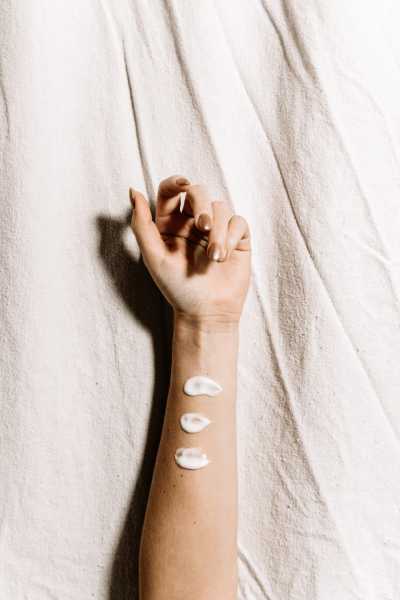
(Photo from: xandro Vandewalle via Unsplash)
“A sunscreen is basically anything with sunscreen filters and ideally tested in that regard,” Dr. Mara Padilla Evangelista-Huber, dermatologist and dermatopathologist at Levana Dermatology Clinic shared.
We all know that sunscreens help to lower our chances of getting skin cancer and slow down premature skin ageing caused by ultraviolet radiation. But are sunscreens enough to protect you against all the damage of the sun’s UV rays?
“Sunscreens aren’t 100 per cent sunblocks,” she shared. There's no sunscreen that can filter out all UV rays you're exposed to and the UV protection you get is very user-dependent. Ideally, everyone should use two milligrams of product per centimetre squared (that's about half a teaspoon's worth of product) “to get to the targeted or labelled protection” at minimum, but that's if you evenly apply the correct amount.
We can never get away from sun damage scot-free unless we stay indoors with blackout curtains all the time. Since we can’t avoid going outside or being near a window, sunscreen is the best defence against UV rays.
We’ve all heard of UV rays, but did you know that there are three types? UVA is commonly known for causing photo-ageing while UVB is known for skin cell burning and as a cause of skin cancer, but both contribute to all of those cases. Then, there's UVC. UVC rays don’t penetrate the earth’s atmosphere so most of the sunscreen technology available focuses on addressing the effects of UVA and UVB radiation.
What are the types of sunscreens?
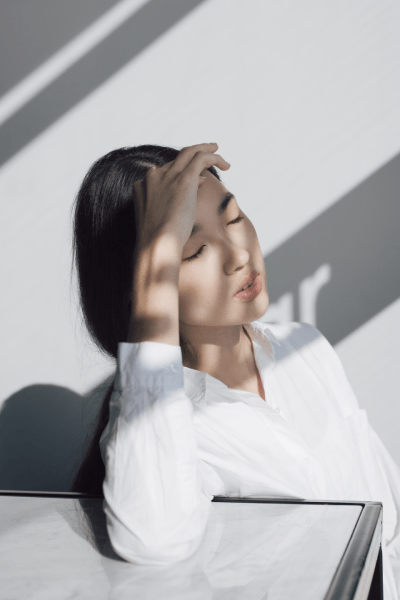
(Photo from: Aiony Haust via Unsplash)
Sunscreens are traditionally divided into two categories: physical and chemical. Physical sunscreens sit on top of your skin, acting as a barrier between your skin and ultraviolet radiation. Meanwhile, chemical sunscreens partially absorb UV rays, convert them into heat through a chemical reaction and release them back into the environment.
However, Dr. Evangelista-Huber says it’s more accurate to call them inorganic (physical/mineral) and organic (chemical) formulas. Inorganic sunscreens use mineral oxides, specifically titanium dioxide and zinc oxide, as sunscreen filters. In the past, inorganic or physical sunscreens were also typically recommended for people with sensitive skin, as zinc and titanium oxide have a lower risk of causing reactions.
On the other hand, organic sunscreens have carbon-containing compounds like Uvinul T and oxybenzone to filter UV rays. But any type of sunscreen, regardless of whether it’s organic or inorganic, is capable of absorbing and releasing heat to a certain degree.
Categorising these sunscreens as either or the other is also dated, since sunscreen technology is more sophisticated nowadays and many sunscreens even use a combination of both. Sunscreens also come in different textures, or vehicles, that make them easier to interact with certain skin types now.
Forms of sunscreen
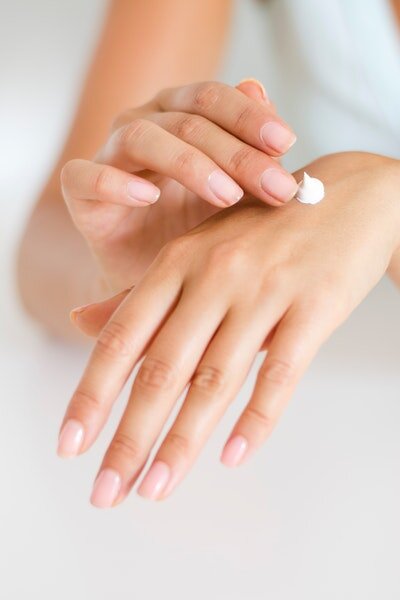
(Photo from: Linda Prebreza via Pexels)
Gel sunscreens are typically recommended for people with oily skin because they're not as greasy when combined with excess sebum. Meanwhile, heavier creams and milks work well on dry and normal skin types. There are also sprays and sticks, however, Dr. Evangelista-Huber did say it’s harder to estimate how much product you're applying and if you're using the adequate amount when it comes to these.
There are also makeup and moisturisers containing SPF and sunscreen filters now. "Makeup and moisturisers may also contain sunscreen filters, however, it might be more challenging to apply the adequate amount to achieve the labelled protection for makeup products — but this is more possible for moisturisers," Dr. Evangelista-Huber said.
If you were to use makeup with sunscreen, it’s "very rare" that you’d use half a teaspoon's worth of foundation in one application, so the sun protection in these products could be negligible at best.
However, it's easier to gauge the proper amount of product if you're using moisturisers with sunscreens. But again, you need to apply the required proven and tested amount and apply it correctly to receive the sun protection you need — more on that later.
At the end of the day, it’s the SPF and PA levels that matter.
Understanding the labels
You’ve probably heard of the terms SPF and PA levels by now. But let’s clear up the difference between the two.
Sun Protection Factor (SPF)
SPF is “the ratio of the least amount of ultraviolet radiation (UVR) required to produce minimal redness on sunscreen-protected skin to the amount of UVR required to produce the same redness on unprotected skin”, Dr. Evangelista-Huber shared. This label signals "how long the sun's rays would take to redden your skin" when the sunscreen is applied exactly as directed "compared with the amount of time without sunscreen".
Ideally, using a product with SPF 30 would take you "30 times longer to burn" than if you weren’t wearing sunscreen. To put it into context, SPF 30 allows about three per cent of UVB rays to hit your skin. An SPF of 50 allows about two per cent of those rays through. "That may seem like a small difference until you realize that the SPF 30 is allowing 50 per cent more UV radiation onto your skin." Dermatologists recommend getting SPF 30 at minimum.
Persistent Pigment Darkening (PPD)
This measures "the amount of UVA radiation needed to produce the first pigmented reaction on protected and unprotected skin". It’s how much exposure to UVA radiation it takes for your skin to develop a long-term change, or a tan, as compared to unprotected skin. Similar to SPF, a PPD 10 indicates can it can take up to 10 times more sun to tan than without. PPD is typically used in European sunscreens but is used in some Asian sunscreens as well.
Protection Grade for UVA (PA)
The PA system is one of the most commonly seen sunscreen labels regarding UVA protection. This is the range of PPD values that's resulted from lab testing.
A sun cream with PA+ will have a PPD of two to four, which means it can take two to four times as much UVA radiation compared to unprotected skin. PA++ means a PPD of four to eight, PA+++ is PPD of eight to 16, and four plus signs are for those with PPD of 16 and above. The more plus signs you see, the lower the percentage of UVA radiation passes through and affects your skin.
Another rating system is called the Boots Star Rating System that uses percentages instead of plus signs, but it generally means the same thing.
It’s important to note that different countries label and regulate sunscreens differently. It’s why some countries require stringent testing for SPF levels while others don’t.
For example, the Australian Therapeutic Goods Administration differentiates sunscreens into two categories: therapeutic (meaning these have to be listed or registered to be marketed as UV protection in the country) and cosmetic (typically includes makeup products that contain SPF 15 and lower).
Meanwhile, sunscreens are considered as drugs in the US so they’re strictly regulated by the Food and Drug Administration. They also capped off on labelling SPF levels to a maximum of 50, though the actual ability of the product to protect your skin can be higher than that.
Japan considers sunscreen to be quasi-drugs, so there’s more leeway in terms of experimentation, testing, innovation, and distribution. "They [still] require approval of their formulations, ingredients, use levels and functionalities, in addition to stability testing." Most Japanese sunscreens have high levels of SPF and PA that meet the European Union’s and Australia’s standards which are considered to be some of the most stringent when it comes to sunscreens.
There was also a recent K-beauty sunscreen fiasco, where some Korean sunscreens were tested to have lower SPF and PA levels than indicated on its labels. These discrepancies can happen, according to Dr. Evangelista-Huber, but this still shouldn't prevent you from using sunscreens altogether.
Different labs use different testing protocols; some may not be as extensive as others, and requirements vary from region to region so the test results may differ as well.
The real proper way of applying sunscreen
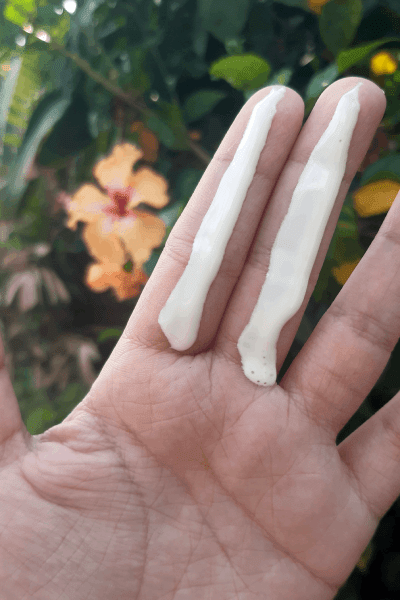
Two generous finger-lengths will offer enough product for your face and neck.
If there’s another fact you need to know about how to properly use sunscreen, it's that you may be not applying enough of it. Remember the half a teaspoon-worth of product we mentioned a bit ago? You don’t really need to use a teaspoon. To make it easier, it's generally advised to use two very generous finger lengths-worth. More is always better in this case.
You also need to remember to apply the product evenly across your entire face and body. That means not go lighter on your T-zone because it gets oily later in the day and double up applying it on the cheeks instead.
You’ve probably seen that viral sun cream contouring trend on TikTok, where folks apply SPF90 sunscreen on the high points of their face and use SPF30 or none at all in the places they want contoured. This is the exact wrong application.
@stopiteli I am convinced this works! #tutorial #contour #summer #lifehack #hack #beautyhack #snatched #tiktokwellness #hiddentalent
♬ original sound - Eli Withrow
Sunscreen myths to stop believing
Sunscreen stacking
"Stacking" or layering products with different SPF levels on top of each other? That’s a no-no. "Using SPF 30 plus SPF 30 doesn’t mean [you’re getting] SPF60," Dr. Evangelista-Huber said. "At the very most, it’s just another SPF 30." Essentially, you’re not increasing the protection, you’re just adding another step to your skincare regimen.
She also cautions against using this method because you don’t know "how the [different sunscreen filters] are going to interact with each other" and may "decrease sun protection by causing chemical reactions between the sunscreens being used, potentially causing inactivation of the filters".
Going light first
Another factor to consider is underapplication. "Because you know you’re going to apply another layer, you might go light on [the first] sunscreen so it doesn’t feel greasy," she warned. You might also move around the first sunscreen as you apply the second layer, creating an uneven surface. Again, you only get the labelled protection if you follow the right amount and even application as the sunscreen was initially tested.
So what do you do instead? "We advocate for layering [or reapplying] the same sunscreen multiple times," Dr. Evangelista-Huber said. She recommends reapplying your sunscreen every two hours if you’re in direct sunlight and engaging in activities that make you sweat or get wet since the sun protection from the first application diminishes over time.
But keep in mind that it doesn’t necessarily mean you have to reapply your sunscreen if you’re staying indoors. If you don’t work in front of a window with direct sunlight for most of the day, then the initial application may be enough.
Should I wear sunscreen when working on my computer?
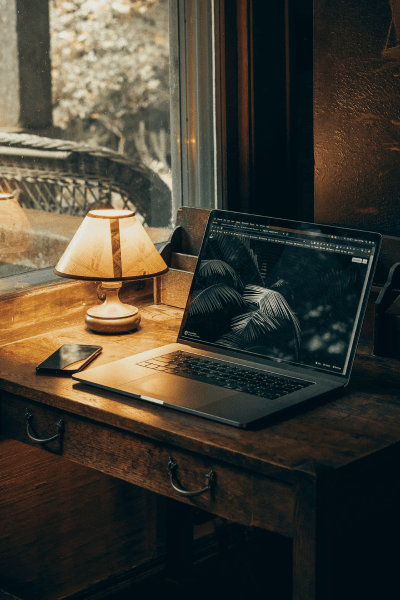
(Photo from: Clay Banks via Unsplash)
You may have heard of blue light from devices potentially causing your skin to prematurely age. If so, you can rest easy. Contrary to popular belief, the sun is still the main source of visible light, which includes blue light. "Blue light is a type of visible light right next to UV in terms of wavelength. It has shorter wavelengths than other visible light [so it contains higher energy]," Dr. Evangelista-Huber said. Since the sun still emits lots of blue light, we are more exposed to it even though it has lower energy than UV rays.
In terms of its effect on our complexions, blue light can aggravate "hyperpigmentation in darker skin types", "trigger rare light-sensitive disorders", and potentially "contribute to premature ageing" — though there are limited data on the last one.
"It’s unlikely that blue light from screens will damage the skin of healthy individuals," Dr. Evangelist-Huber shared. However, it can be of concern for those with "existing hyperpigmentation (e.g. melasma), darker skin types, and those with photosensitivity disorders".
When it comes to blue light from the sun, however, regular sunscreens don't provide enough protection. "Staying in the shade, wearing hats/protective clothing, [as well as wearing] tinted sunscreens, tinted moisturisers, and foundations may help."
Sunscreen recommendations
Now that you know how sunscreens work and how to properly use them, it’s time to protect yourself with the right one! Here are some recommendations.
Anessa Moisture UV Sunscreen Skincare Gel SPF 50+ PA++++
Japanese sunscreen brand Anessa prides itself on being an authority in UV protection. Not only do their products protect your skin from UV rays but they are also one of the most cosmetically pleasing (it looks and feels better on the skin) options available right now. We have a special place in our hearts for the Perfect UV Mild Milk, the classic milk version, but the dewy finish of the Perfect UV Sunscreen Skincare Gel variant (made with 50 per cent skincare ingredients) deserves to be highlighted too. It has the same Aqua Booster EX Technology that strengthens its UV protection when it comes into contact with sweat and water. This sunscreen can be worn underneath your makeup as primer, too.
Supergoop! Mineral Sheerscreen SPF 30
Supergoop!’s newest sunscreen, the Mineral Sheer Screen SPF 30, is an inorganic sunscreen with a satin finish for those who want a minimally touched-up base. It boasts of a SheerMatrix Technology that suspends the sunscreen actives in a matrix, allowing the formula to be easily blended and spread; this helps to achieve a totally sheer finish when applied without compromising its efficacy. Some of its ingredients include 17.5 per cent zinc oxide, bush clover extract, and moisturising aloe leaf juice, so you also get some skincare benefits with your SPF.
La Roche-Posay Anthelio Invisible Fluid Sunscreen SPF 50+
Looking for an affordable pick that delivers on its promises? La Roche-Posay’s Anthelios Invisible Fluid SPF 50+ has an invisible, non-sticky and non-greasy texture that makes it wearable underneath makeup. This sunscreen has been tested to protect the skin from UVA, UVB, infrared-A, and pollution with SPF50+, PPD 46, and PA++++ — meaning it can block out 98 per cent of UV rays.
CeraVe AM Facial Moisturizing Lotion SPF 30
If you want a moisturiser with broad-spectrum SPF, the CeraVe AM Facial Moisturizing Lotion SPF 30 is the one to consider. It uses InVisibleZinc™ Technology to make the formula’s zinc oxide spread easily, while the patented MVE controlled-release technology replenishes ceramides and gives lasting hydration. It’s also non-comedogenic, so you won’t have any clogged pores.
Shiseido Global Suncare The Perfect Protector SPF 50+ PA++++
We’re capping off this list with the Shiseido Global Suncare The Perfect Protector SPF 50+ PA++++. It features SHISEIDO’s exclusive SynchroShield Technology™, which, when activated by heat, water and perspiration, strengthens the UV protective veil on your skin. It’s also enriched with skincare ingredients to address the visible signs of UV damage like wrinkles, dark spots and dullness.
It’s summer every month in Southeast Asia, so wearing sunscreen is non-negotiable. Always remember to protect your skin so you can step outside without fear.
Disclaimer: The products mentioned in the story are not endorsed by the dermatologist and are shared as general recommendations by the writer based on the knowledge shared by the expert.
(Cover photo from: xandro Vandewalle via Unsplash)
Here’s another anti-ageing skincare hack: the Japanese face massage.
Comments, questions or feedback? Email us at [email protected].





